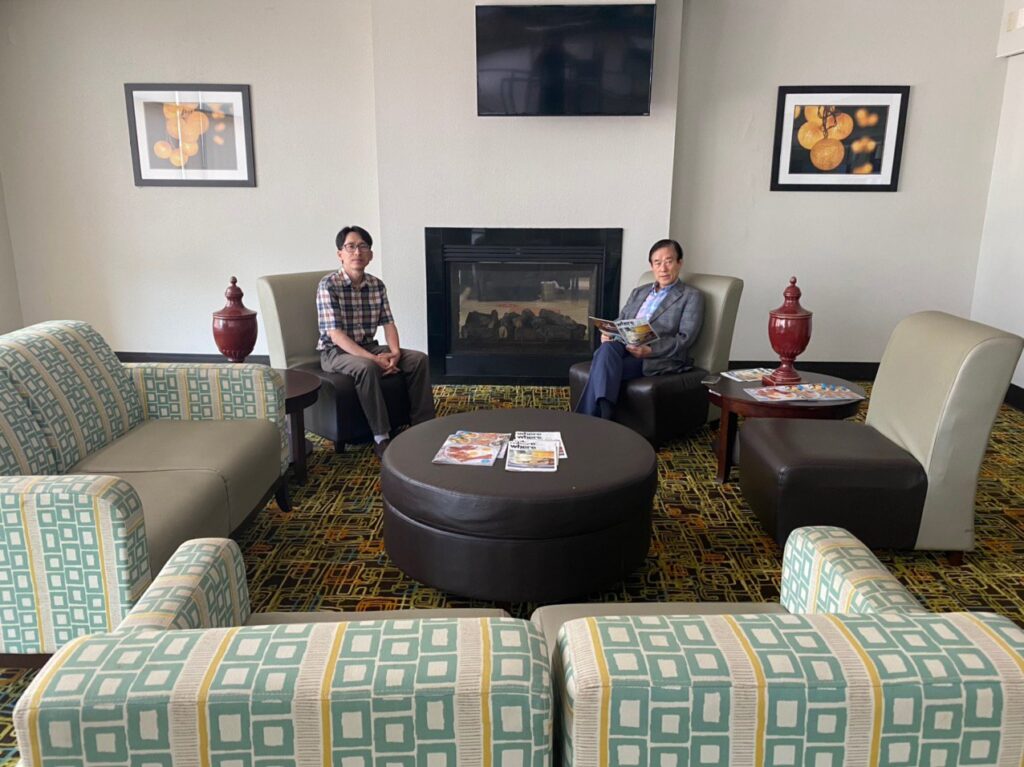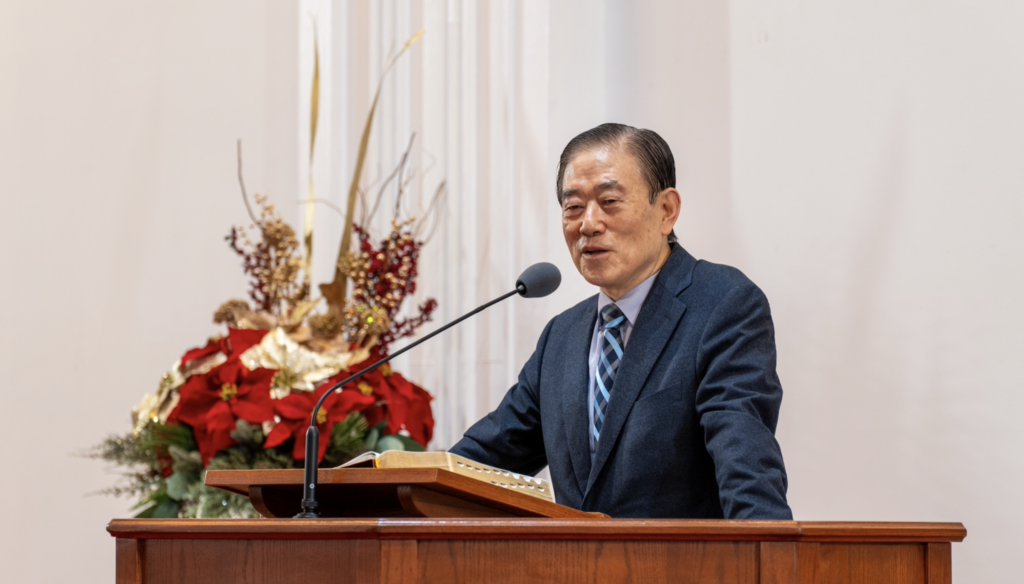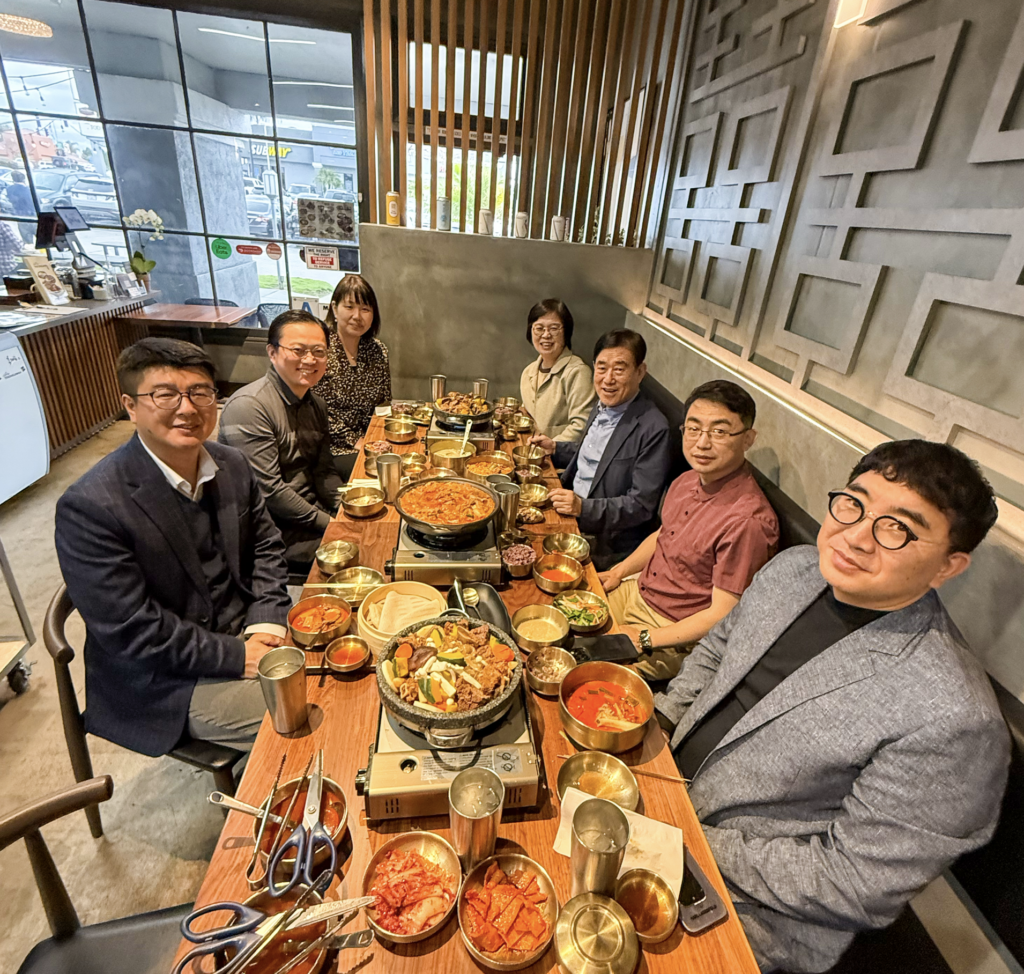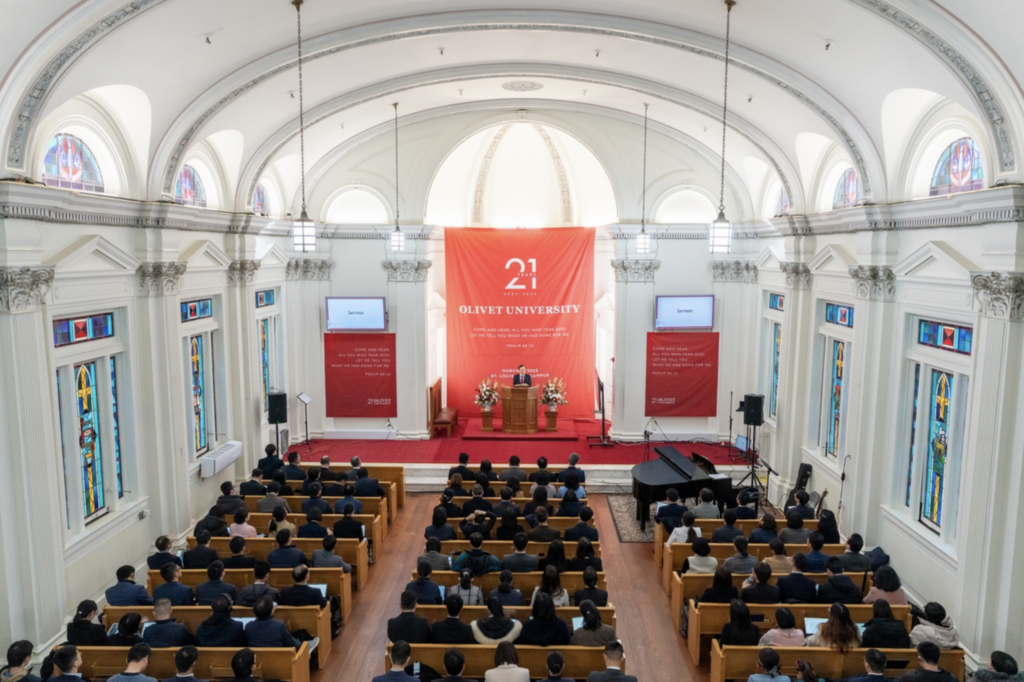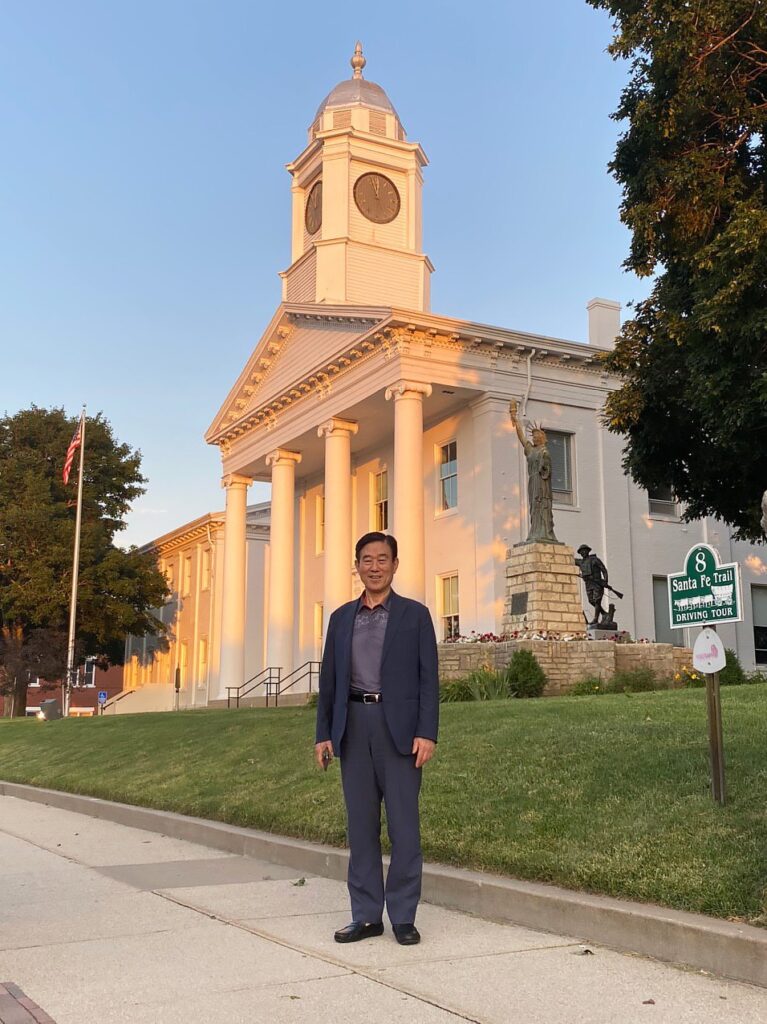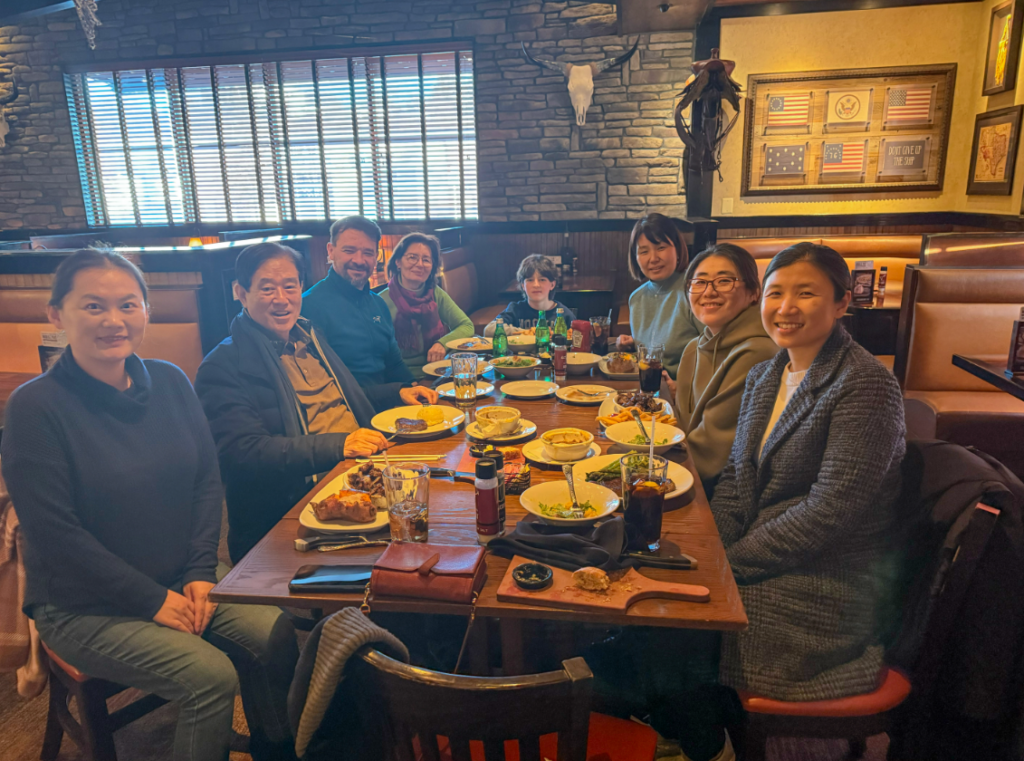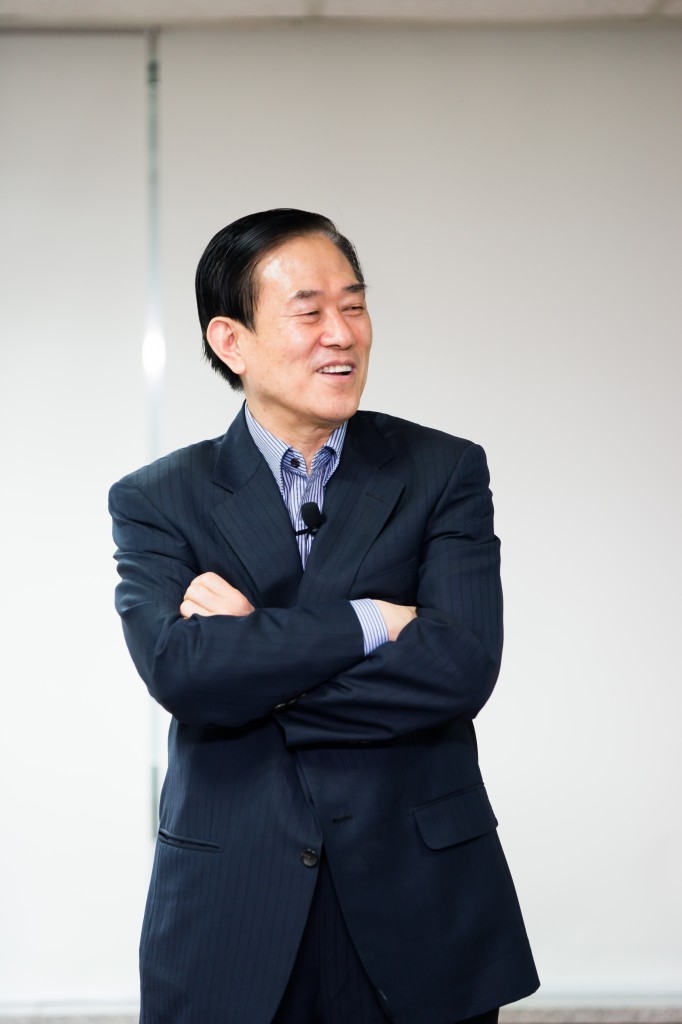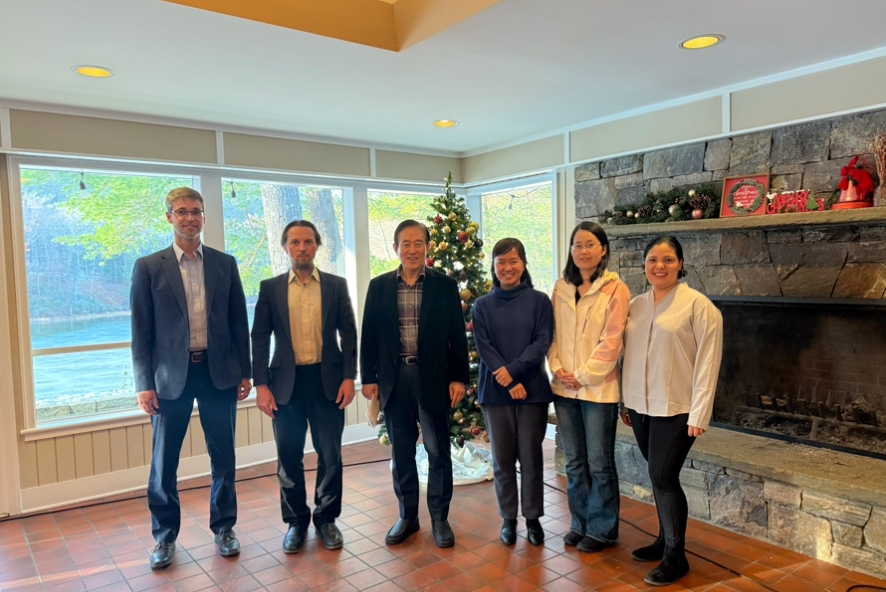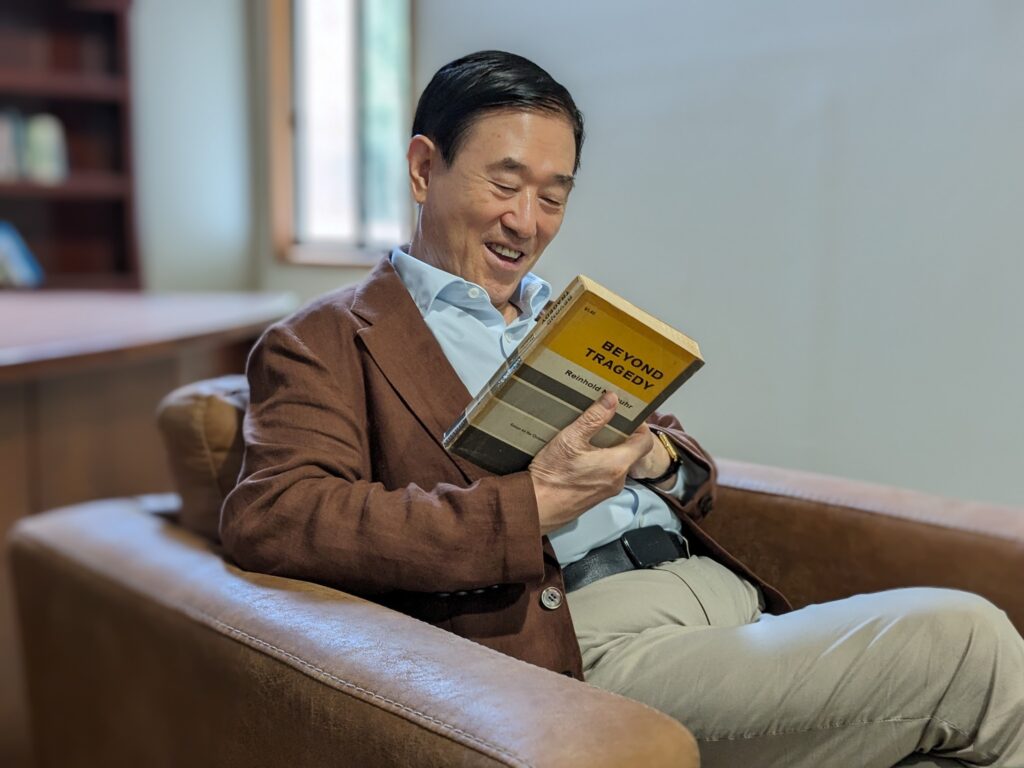
1. The Doctrine of God’s Predestination, Providence, and Our Assurance of Salvation
In his exposition of Romans 8, Pastor David Jang underscores the assurance of salvation and the absolute sovereignty of God that surpass human anxiety and limitations. Looking at verses 28 through 30, the Apostle Paul declares, “And we know that for those who love God all things work together for good, for those who are called according to his purpose.” Human beings, as we live our lives, constantly face the anxiety of not knowing the future. What we once believed to be good could one day result in harm, or what seemed detrimental to us might turn out to be a surprising benefit. Human life is often shrouded in such limitations and instability, but Paul interprets this within the providence of God, who causes all things to “work together for good.”
While explaining this passage, Pastor David Jang highlights that the key lies in the phrase “those who love God.” Although within us exist shortcomings and various weaknesses, when they are encompassed by the identity of being “those who love God,” He orchestrates all these pieces like a mosaic to bring about good. A mosaic reveals its full picture only when the small tiles fit together, and similarly, the diverse circumstances, adversities, and limitations of God’s people ultimately blend together under God’s plan to lead us to a good end. This is not limited to each individual’s calling alone; it unfolds as God’s work that “works together for good” within the church community as well.
Paul personally experienced this reality. Once an ardent persecutor of the community of believers in Jesus Christ, he made a dramatic turn to become one of the most passionate evangelists. The result was an astonishing turnaround that no one had anticipated, greatly contributing to the early church’s efforts in sowing the seeds of the gospel far and wide. From Paul’s perspective, no adversary could fundamentally destroy those whom God loves; this is the truth he emphasizes powerfully in Romans 8.
Romans 8:28’s reference to “all things work together for good” implicitly includes God’s predestination and providence. Predestination means that God has determined all things in advance, and providence means that God foresees and guides history and human life according to His plan. Etymologically, “providence” comes from the Latin words meaning “to see (videre) beforehand (pro).” It implies that every moment of our lives and our history already fits into God’s grand design. Pastor David Jang also refers to this as the “sovereignty of God,” reminding us how this concept has been at the center of countless debates and discussions throughout Christian history.
Indeed, this doctrine formed a major basis for Calvin’s teaching on predestination, especially the concept of double predestination. Because it distinguishes between those chosen by God and those passed over, fierce opposition and controversy have arisen. However, Calvin’s ultimate purpose was to underscore the “amazing assurance of grace that believers enjoy under God’s absolute reign and love.” In the historical context of Calvin’s era and beyond, as people increasingly gravitated toward rationalism and human-centered reason, the idea of Deism (a belief that God is a distant creator who does not intervene in the world) gained traction. This viewpoint denied the living, active relationship with God, attempting to interpret the world through human reason alone. In contrast, Calvin strongly proclaimed the “absolute sovereignty of God” to emphasize that God is not a distant being simply dwelling beyond the universe, but One who is actively involved in our history and world—even overseeing the life and death of a small sparrow. Likewise, Paul, sharing the same premise in Romans 8, states that all things ultimately work for good under God’s absolute sovereignty for those whom He loves.
Pastor David Jang explains that the church is the community of those who have been called. Literally, the church refers to those who are “called out” according to God’s purpose from the midst of the world. Therefore, the church is not merely about organization or external administrative systems. It is a spiritual community of people who love God, believe and obey His divine rule and providence, care for one another, and walk the path together. In this sense, verse 28—“for those who love God, who are called according to His purpose”—flows seamlessly into the astounding promise, “all things work together for good.” Even our shortcomings, weaknesses, or the fragmentary pieces of our life become a masterpiece in the hands of the Almighty God.
Moving on to verses 29 and 30, Paul clearly explains God’s foreknowledge and predestination: those whom God “foreknew” He also “predestined,” and He ultimately “called,” “justified,” and “glorified” them. This summarizes the steps and journey of salvation for believers in the church. Briefly put, there is foreknowledge → predestination → calling (vocation) → justification → glorification. We often distinguish these as justification, sanctification, and glorification. At this point, Pastor David Jang emphasizes that Paul’s teaching on foreknowledge and predestination is not about a mere fatalistic determination but rather a strong proclamation of the “absolute nature of grace.” Human faith is entirely possible because God’s grace comes first. Understanding that this grace is “prevenient” is a critical key to grasping the ordo salutis, or order of salvation.
Paul experienced this most powerfully himself. He had led the effort in stoning Stephen and was a brutal persecutor, yet he was transformed into a fervent apostle of Jesus Christ. Reflecting on this dramatic reversal, he must have frequently wondered, “Why would God choose someone like me?” Though Paul grappled with profound guilt over his past, he ultimately could not help but praise the grace of God in Romans 8, which had foreknown all his evilness and shortcomings, yet still accepted and redeemed him. “We are more than conquerors through Him who loved us.” Paul himself was living proof of that reality.
God saves those He loves through foreknowledge and predestination—but not only to bring them to salvation but also, as verse 29 says, “to be conformed to the image of His Son.” The goal of our calling is to resemble Jesus Christ. He is the Firstborn Son, and we are called to be the many brothers and sisters who follow Him. This is the “greater purpose of salvation” Paul highlights. It does not merely end with the forgiveness of sins and the avoidance of judgment; rather, it is about fully becoming children of God, growing to reflect the image of Jesus, and moving toward spiritual completion.
Verse 30, “And those whom He predestined He also called, and those whom He called He also justified, and those whom He justified He also glorified,” once again majestically reveals Paul’s certainty regarding the steps of salvation. Can God’s providence—according to which He foreknew, predestined, called, justified, and ultimately leads to glorification—be shaken? Paul’s answer is unequivocal: absolutely not. Pastor David Jang points out that this is the foundation of the inner peace and assurance of Christian faith. Sometimes the fact of being “chosen” can lead to misunderstandings—perhaps fostering pride or becoming a means to condemn others. But Paul’s intent here is not to promote arrogance; rather, it is to underscore that we should rejoice and be grateful for “God’s generous love for those who were entirely unworthy.” And because that love is so powerful, Paul boldly declares, “If God is for us, who can be against us?”
In verse 31, Paul asks, “What then shall we say to these things?” By “these things,” he refers to the entire process—God’s foreknowledge, predestination, calling, justification, and glorification. Is there any human reasoning or power that could nullify or deny this process? Paul’s emphatic conclusion is, of course, that there is not. He then continues with a triumphant hymn-like proclamation: “If God is for us, who can be against us?” which demonstrates our unshakeable security in salvation. Because we who are saved abide in His grace, no external power can undo that salvation, as even the psalmists declare: “The LORD is my light and my salvation; whom shall I fear?” (Psalm 27:1), and “For God alone my soul waits in silence” (Psalm 62:1).
When Pastor David Jang expounds this passage, he does not gloss over the reality of human sinfulness or the fact that believers may stumble. Salvation does not make us immune to sin. However, whenever we reel from unbelief or doubt and falter in sin, the One who rescues us is not our own merit or efforts, but rather “God’s predestination, providence, and unchanging love.” We sinners constantly wonder, “Am I really saved?” or fret, “I’ve stumbled again—is it over for me?” But Paul counters with rhetorical questions: “Who shall bring any charge against God’s elect? Who is to condemn?” He then points out that no one can condemn those God Himself has declared righteous.
In verse 32, “He who did not spare His own Son but gave Him up for us all” alludes to Genesis 22 where Abraham offered up Isaac, yet it reveals an even greater love of God. While Abraham gave up Isaac in faith, in God’s case, He is the Almighty Himself, who allowed His only begotten Son, Jesus Christ, to be crucified for the salvation of sinners. By this sacrifice, our salvation is made possible. Thus, Paul reasons, “How will He not also with Him graciously give us all things?” testifying to God’s endless mercy and compassion.
Emphasizing “the love of God” from verse 32, Pastor David Jang reiterates that nothing can shake our salvation. Humanity’s greatest crisis is death, but Jesus Christ conquered the power of death through His resurrection and now intercedes for us at the right hand of God. Therefore, believers are those clothed with the Lord’s love, and even if we suffer external persecution or internal guilt, ultimately the only one who can condemn us is God. Yet that God has declared us righteous; hence, no accusation can stand. This is the logic of verses 33 and 34: “Who shall bring any charge? Who is to condemn?” Then it culminates in Christ’s intercession at the right hand of God.
The Apostles’ Creed likewise confesses, “He was buried, and on the third day He rose again from the dead; He ascended into heaven and is seated at the right hand of God the Father Almighty,” precisely echoing Romans 8:34. Jesus, who will judge the living and the dead, is nonetheless the One who continually intercedes on our behalf. What greater comfort can there be? As Pastor David Jang explains, this is the firm foundation of salvation for those who have been redeemed, liberating us from doubt and fear.
So, the salvation proclaimed in Romans 8 rests on the pillars of God’s foreknowledge and predestination. It is carried forward by His calling and justification, and ultimately it leads to a glorious end under His providential care. At each step, Paul raises a forceful challenge—“Who can be against us? Who shall bring any charge? Who shall condemn?”—and insists it cannot be shaken. Jesus Christ not only died but was raised to life, and He is now at the right hand of God, advocating for us. This message frees us from anxieties about salvation and places us upon the solid rock of assurance.
In conclusion, Pastor David Jang teaches from Romans 8 that we must experience the unwavering fact of God’s electing love not merely as doctrine but as real comfort and power in life. Just like the deists in Calvin’s day or today’s secularists or those who idolize science and technology, if people reduce God to a distant creator or an impersonal principle, faith immediately loses its power. However, when we hold the belief that “all things work together for good,” and exclaim with boldness, “Who can be against us?”, what we receive is not just consolation but a life-transforming conviction. Because of this assurance, Paul can declare in the final verses, “Who shall separate us from the love of Christ?”
2. Living a Life of Victory Through Him Who Loves Us
In his exposition of the latter part of Romans 8, Pastor David Jang points out that Paul’s question, “Who shall separate us from the love of Christ?” is one of the most beautiful confessions of faith in the Bible. In verse 35, Paul enumerates all the troubles that believers might face: tribulation, distress, persecution, famine, nakedness, danger, and sword—seven in total. These are real, extreme conditions that could befall believers. In Paul’s era, Roman Christians indeed faced persecution and pressure, constantly threatened with survival issues. Famine, destitution, and the fear of execution loomed around them. Does that mean the church and believers should collapse in the face of these fears? Paul says emphatically no. “In all these things we are more than conquerors through Him who loved us (v. 37).”
“To be more than conquerors” does not mean hanging on by a thread and barely surviving at the end. It is a phrase that indicates “ultimate victory” is already guaranteed because God’s love is so steadfast. This confidence flows from Paul’s assurance of salvation’s consummation in the kingdom of God. Jesus declared in John 16:33, “I have overcome the world,” and we who follow Him, though we face tribulation in the world, participate in His victory. According to Pastor David Jang, Romans 8:37 testifies that “weak and frail human beings can boldly make this confession because they are safe in the embrace of the Almighty.” It is like the lowliest person walking hand in hand with the highest king, able to keep going without stumbling—or to rise again even if they do fall.
In verses 38–39, Paul reaches a famous crescendo: “For I am sure that neither death nor life, nor angels nor rulers, nor things present nor things to come, nor powers, nor height nor depth, nor anything else in all creation, will be able to separate us from the love of God in Christ Jesus our Lord.” In addition to the seven afflictions already mentioned, here Paul lists nine or more possible adversaries. He spans death and life, angels and powers, the present and the future, various forces, heights and depths—embracing space, time, the spiritual and material worlds, even cosmic realities. Yet he insists that no matter how colossal and formidable they may appear, none can overthrow the love of God.
Some interpret “height” (hypsōma) and “depth” (bathos) as references to the astrological worldview of Paul’s day, where people believed that the arrangement of the stars determined human fate. However, Paul denies this astrological fatalism. No matter how much someone might claim that the stars’ movements influence human destiny, they cannot surpass “the love of God in Christ Jesus.” Pastor David Jang stresses that even in modern times, we can easily resign ourselves to the idea that “human beings are powerless,” swayed by scientific data, environmental factors, and personal experience. But Paul’s certainty stands in stark contrast to such resignation. God chose us, offered His only Son for us, demonstrated His love through the Cross and resurrection, and continues to guarantee that love by Christ’s ascension and the Spirit’s ongoing intercession—nothing in all creation can sever us from it.
Furthermore, the phrase “nor things present nor things to come” overcomes our anxiety about the future. Our past sins and failures may haunt us, and uncertainty about tomorrow may make us tremble. Yet Paul proclaims that both the present and the future are upheld in Christ. Therefore, believers need not be captive to fear. Rather, we live each day with the outlook of someone fighting a battle whose outcome has already been decided. Although current hardships and challenges may cause temporary pain, the final outcome is secured. Pastor David Jang links this to the theological concept of the “perseverance of the saints.” Once someone is saved, they are guided and kept under God’s unconditional love to the very end, never ultimately failing or perishing. Though human frailty or sin might cause us to stumble temporarily, it does not negate our final salvation.
Romans 8 inspires this assurance—not because our will or resolve is flawless, but solely because God chose us, called us, justified us, and will glorify us. And to accomplish this plan, Jesus Christ has already died and risen again; He is now at the right hand of God interceding for us. At the same time, the Holy Spirit works within us, interceding “with groanings too deep for words,” sanctifying and transforming us (Romans 8:26). This is the entire ground on which Paul can confidently ask, “Who shall separate us from the love of Christ?”
Pastor David Jang advises us to pay particular attention to the phrase “through Him who loved us” in verse 37. From the start to the finish of salvation, everything depends on “the One who loves us.” Even if tribulation, suffering, or death itself should threaten, we can still conquer through Him who does not merely observe from a distance but actively sustains us. In this sense, the Christian journey is by no means an easy or pain-free road. In fact, trials are inevitable. But even those trials become opportunities to experience God’s love more profoundly. This is evident throughout the Gospels in Jesus’ teachings and actions toward His disciples, and in the Book of Acts as the early church walked that same path. Despite persecution, famine, fear, and danger, the church continued to grow, and the gospel spread throughout the world.
The same teaching remains relevant for us today. Following Jesus is not always a path of comfort; sometimes it means refusing to align with worldly trends and injustice. This may lead to alienation or criticism. Some may experience famine or nakedness to the point of genuine hardship. Others face opposition from family or community due to their faith. There are even places in the world today where believers are still threatened with persecution or death. Therefore, Paul’s catalog of suffering is not alien to modern Christians. In such circumstances, God’s people might easily feel despair at their lack of power to overcome. Yet Paul, quite the contrary, confidently affirms that “nothing can separate us from the love of God.”
Verse 36 quotes Psalm 44:22: “For your sake we are being killed all the day long; we are regarded as sheep to be slaughtered,” portraying the constant peril of martyrdom that the early church genuinely faced. The path of faith can include facing threats of death. Nevertheless, in verse 37, Paul asserts, “No, in all these things we are more than conquerors through Him who loved us,” looking beyond death to the hope of resurrection and the absolute victory of the kingdom of God. Pastor David Jang urges us to meditate on verse 37 whenever our faith weakens, remembering “the present suffering is not all there is.”
In verses 38 and 39, Paul heaps up a list of realities, reflecting the severity of the Roman Empire’s persecution and the intense spiritual challenges of the time. Nevertheless, he proclaims in striking language that no circumstance can separate us from God’s love. “Death nor life, angels nor rulers, the present nor the future, powers, height nor depth, nor anything else in all creation” are all still subject to the Creator. Death, the most extreme human dread; earthly rulers, the mightiest powers; even mysterious and vast cosmic entities—none of them operate beyond God’s sovereign rule. Therefore, not even these can undo the love of God guaranteed through the death and resurrection of His only Son. Paul’s answer is a resounding “No, they cannot.”
Summarizing this passage, Pastor David Jang encourages believers to remember that ever since God called us His children, He has exercised “ongoing management” of us all the way to our ultimate glorification. No matter our human limitations or dire circumstances, our salvation does not remain incomplete; it carries on until we are finally made glorious. On the other hand, the question that continually tests our faith is “Do we truly believe this?” As Paul stresses repeatedly, we daily fight between “the law of sin” and “the law of the Spirit of life” (Romans 7–8). We fail at times, but whenever that happens, our refuge is the cross of Christ, the power of the Holy Spirit, and the advocacy of Jesus Christ. Thus, the bold refrain “Who will bring a charge against us? Who shall condemn us? Who shall separate us from the love of Christ?” resounds again and again.
The latter part of Romans 8 speaks directly to every threat and challenge we may face as believers, and to our own internal doubts, proclaiming, “God has already overcome, and He holds us in His love, so all those adversaries cannot prevail.” Therefore, Christians can remain at peace in the certainty of God’s love not only as we go about our daily lives but also, ultimately, when death itself approaches. That is the heritage left to us by the faithful who have gone before us, and it is the fiery passion embedded in Paul’s conclusion to Romans 8.
As Pastor David Jang arrives at this conclusion, he emphasizes that our faith must not be so shallow as to “only choose the good days to believe in God.” Even when there is no outward persecution, life’s heavy burdens remain, and we continually face spiritual battles against sin. Yet, even in a wilderness-like life, do we have confidence in the “good and beautiful outcome” that God has prepared? That is the genuine source of a believer’s self-worth and spiritual strength. “He who did not spare His own Son” is the greatest basis on which we can combat fear. And the certainty of this love is precisely the final meditation and confession of verse 39: “Nothing in all creation will be able to separate us from the love of God in Christ Jesus our Lord.”
Romans 8 ends here, but for the Roman Christians who received this letter—and for believers today—this message continues to unfold in real life. Conflicts may arise within the church community; external environments and worldly ideologies or powers may cause us distress. Physical ailments, financial crises, and other hardships may strike. Whenever that happens, we should recall Paul’s triple or even seven- and nine-fold rhetorical questions: “Who shall condemn? Who shall separate? Who shall stand against?” When we consider the cross, the resurrection, the Spirit’s indwelling, and God’s glorious promises, what can undermine this love? Pastor David Jang recalls Paul’s earlier declaration: “For I consider that the sufferings of this present time are not worth comparing with the glory that is to be revealed to us” (Romans 8:18). As long as we live in this love, our life’s direction and outcome will not change.
The conclusion is singular: Through Him who loves us, we are more than conquerors. Tribulation, distress, persecution, famine, nakedness, danger, or sword—none can ultimately destroy our faith. Though we experience intense, tangible suffering and trials, God stands with us, Jesus Christ intercedes at the right hand of God, and the Holy Spirit prays within our hearts. These truths do not waver or disappear. Because of that love, suffering can become a deeper arena for experiencing grace, weakness can turn into strength, and death itself transforms into the doorway to eternal life. Thus Romans 8:28–39, from beginning to end, proclaims the assurance of salvation, the grace of divine foreknowledge and predestination, the perseverance of the saints, and the unbreakable covenant of God’s love.
In closing his exposition on Romans 8, Pastor David Jang revisits the key theme of “all things working together for good.” Our lives often mingle successes and failures, joys and sorrows. Yet for “those who love God and who are called according to His purpose,” God shapes them into a beautiful mosaic from a transcendent vantage point. Although we cannot see the full masterpiece now, in the end it will be completed according to God’s plan: “to be conformed to the image of His Son, in order that He might be the firstborn among many brothers.” And no power can thwart this plan, because its fulfillment rests entirely on the One who loves us. From a worldly perspective, we may face perilous or sometimes discouraging realities, but as believers, we rely on God’s absolute sovereignty, experience the power of the gospel, and live with gratitude and hope within “the love of God in Christ Jesus our Lord.” That radiant secret is what Romans 8:28–39 so beautifully declares.
